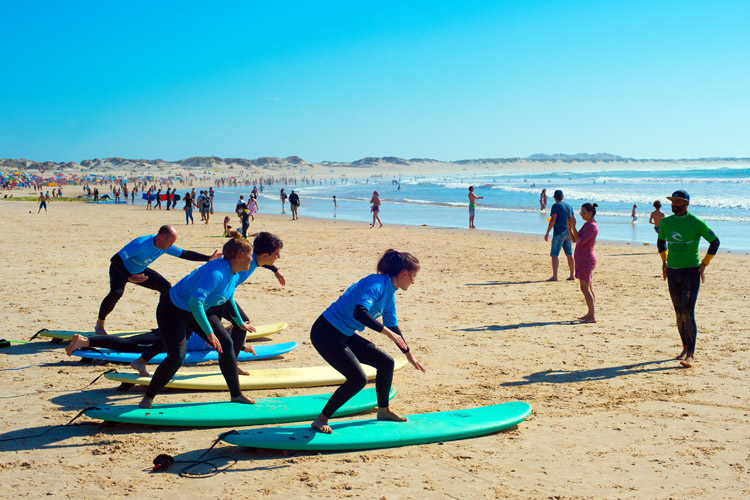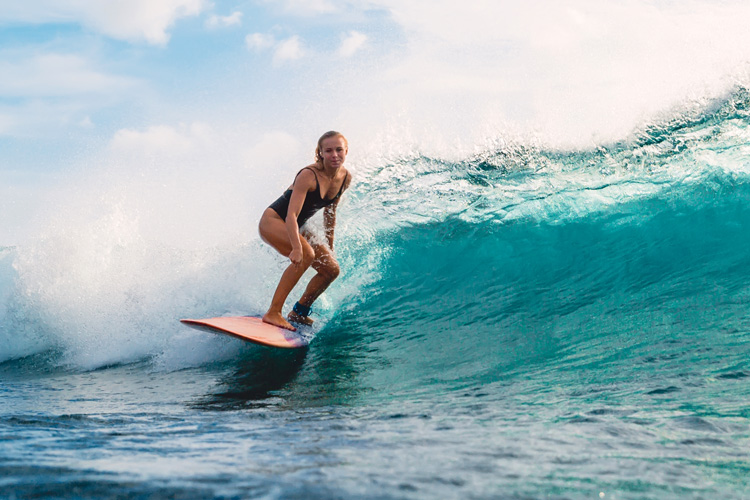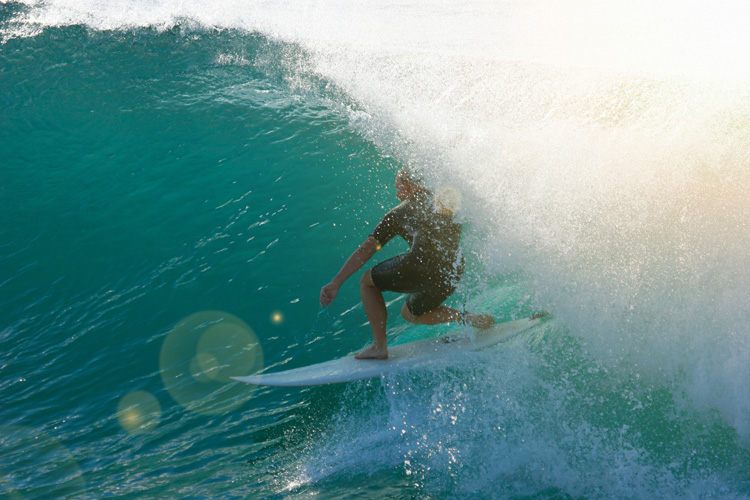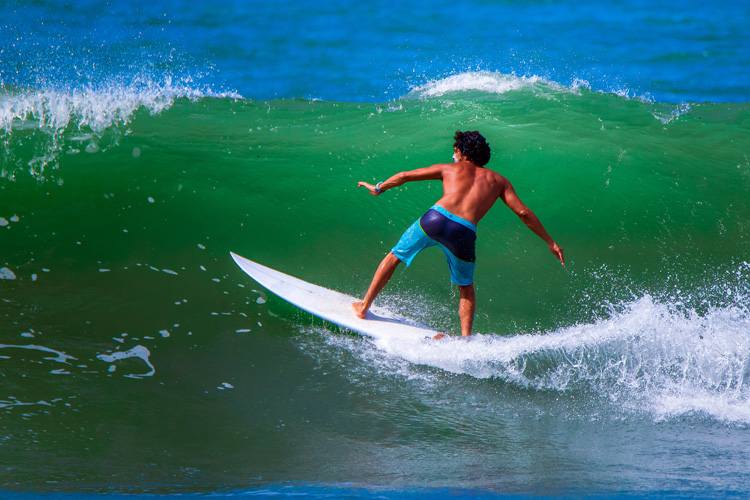Whether you're a regular or goofy foot, the surfing stance is more than just a matter of style. It's an essential skill.
The first thing you must do is to determine your natural stance. To do so, do the "fall forward test" - stand with your feet together and then fall forward.
The leg you use to catch yourself will be your forward leg for your surfing stance.
In the distant past, Hawaiians used to ride waves with their feet parallel, adopting the so-called bully style. In modern-day surfing, we don't do that anymore.
But there's more to the surfing stance than just determining where your front and back foot will position on the surfboard.
Adopting an optimal stance while standing up on the surfboard will improve your balance, acceleration, turns, and overall maneuvering performance on the face of the wave.
If you're a beginner surfer, a low stance will help you maintain your balance. Just don't get too low.
While catching their first waves, novice riders should keep their feet shoulder-width apart, maintain their knees bent to absorb impacts, and their hands close to the board's rails or, at least, at waist level.

A proper surf stance will unlock new territories in wave riding by optimizing weight distribution and adjusting the body to the constant morph of the wave.
A good body position starts with the correct placement of your feet on the surfboard.
If you stand too far back on the tail, you'll bog the surfboard, slow down, and eventually wipe out.
As a general rule of thumb, the surfer's feet should be positioned over the stringer and centered on the width of the board.
Avoid the Poo Stance
The poo stance is one of the most mistakes made by beginners, intermediate, and even advanced surfers.
The name says it all. Riders adopting the poo stance look like they're sitting on the toilet seat with their knees pointing apart.
You're surfing - not taking a poo. Avoid it at all costs. It doesn't look good, and it will hinder you from moving your hips as you draw your line on the face of the wave.

The Open Stance
In surfing, you should be able to control the surfboard forward, backward, over the toes, and over the heels.
However, many first-timers place their front foot faced forward instead of having it pointed sideways. It's called the open stance.
With an open stance, you can go forward and backward, but you have no control from side to side because your front foot is pointing toward the nose of the board.
Taking Off
A surfer should adopt his stance according to the wave he's about to ride.
On a small and slow, mushy wave, the surfer may need to shift his feet forward toward the nose of the board and keep a relatively low stance in order to continue surfing.
However, if you're paddling into a fast, hollow, medium-sized wave, you must shift your feet back toward the tail while taking off to avoid obliteration.
If you're surfing on a wind-affected surf break, you may need to lower your center of gravity to absorb the impacts produced by the choppy waves.
The same rule applies to big-wave surfing. Extreme surfers tend to crouch to maintain balance, absorb unexpected bumps, and reduce the chances of wiping out.

Riding Down the Line
Once you're up and running, the trick is to manage your weight transfer from the tail to the center. The goal is to maximize your riding time and eventually perform all possible maneuvers.
But the surfing stance is also, and simultaneously, a useful gas pedal and brake.
Whenever you need to accelerate down the line to overcome a crumbling section, shift your weight forward (bend your front knee).
If you need to slow down to get back to the power source, move your weight backward (bend your back knee).
The Importance of the Arms and Hands
Your arms play an important role in maintaining balance and the right surfing stance.
After popping up and taking off on a wave, look where you are heading and let your arms free.
You'll notice that your front arm will be close to the left rail of the board, and your right arm will be far back, over the right rail, and close to the tail of the surfboard.
Do you want to take your surfing to the next level? Learn to surf switchfoot.
